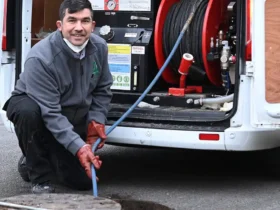Living in Florida, you’re no stranger to the threats hurricanes pose to your home. While it’s easy to assume your standard home insurance has you covered, the reality is that most policies don’t include flood damage, leaving you vulnerable to financial setbacks. Flood insurance isn’t just an added expense; it’s a crucial safeguard against the unpredictable nature of Florida’s weather. But how does it truly protect your assets, and what steps should you take to ensure you’re adequately prepared for the next big storm? Let’s explore the essential role of flood insurance in your financial security.
Understanding Florida’s Flood Risks
Florida’s flood risks are a critical concern due to the state’s unique geographical and climatic conditions. You’re living in a state with over 1,300 miles of coastline and a flat terrain that makes it particularly vulnerable to flooding. The combination of frequent thunderstorms, hurricanes, and rising sea levels contributes to the persistent threat of flooding that can damage homes and businesses and cause billions of dollars in destruction annually.
It’s not just the coastal areas you should worry about; even inland regions experience significant flooding due to overflowing rivers and heavy rainfall. You might think you’re safe if you’re not directly on the coast, but Florida’s karst topography, characterized by limestone and sinkholes, can exacerbate flooding issues.
When heavy rains fall, water doesn’t always drain away easily, leading to potential flooding in places you wouldn’t expect. Urban development also plays a role. As cities grow, natural water absorption is reduced, increasing runoff and flood risks.
Understanding these flood risks is crucial for anyone living in Florida. It’s essential to stay informed about your area’s specific flood zones and potential hazards. Recognizing these risks allows you to take proactive measures, such as considering flood insurance and implementing protective strategies, to safeguard your home and property.
Limitations of Standard Home Insurance
When it comes to protecting your home in Florida, don’t assume that standard home insurance has you covered for every eventuality. Many homeowners mistakenly believe their policy includes flood damage coverage, but it doesn’t.
Standard policies typically cover damage from events like fire, theft, and windstorms, but flood damage is often excluded. Given Florida’s susceptibility to hurricanes, this gap can leave you financially vulnerable.
Standard home insurance might cover water damage from a burst pipe or an overflowing bathtub, but it won’t help if rising floodwaters inundate your home. These policies don’t account for the unique risks posed by Florida’s flood-prone environment. Flooding can cause extensive damage to your home’s structure, electrical systems, and personal belongings, resulting in costly repairs.
Additionally, relying solely on standard home insurance might lead to significant out-of-pocket expenses. Repairing flood damage can be incredibly expensive, and without the right coverage, you could find yourself bearing the financial burden.
It’s crucial to recognize the limitations of your current policy. By understanding what’s not covered, you can take proactive steps to safeguard your home and ensure you’re adequately protected against Florida’s unpredictable weather patterns.
Benefits of Flood Insurance
Flood insurance offers crucial protection for homeowners facing the threat of rising waters. In Florida, where hurricanes and heavy rains are common, this type of insurance is a lifeline. You can’t always predict when a flood will hit, but having coverage ensures you’re not left helpless in its aftermath.
Unlike standard home insurance, flood insurance specifically covers damage from flooding, which is a significant gap in most regular policies.
By investing in flood insurance, you’re safeguarding not just the structure of your home but also its contents. This means if your furniture, electronics, or personal belongings are damaged by floodwaters, you’re covered. Without this coverage, you’d have to pay out of pocket to replace everything, which can be financially devastating.






